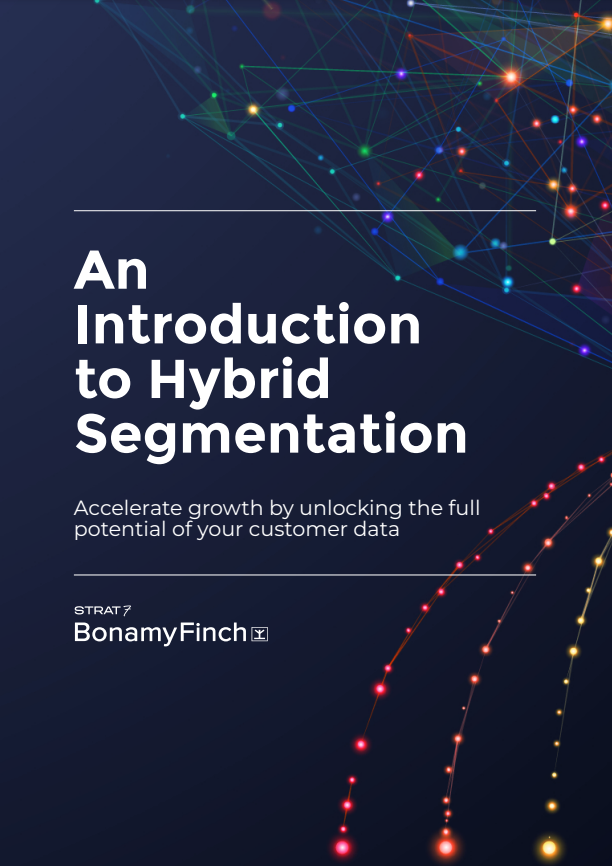In our journey through the world of hybrid segmentation, we’ve explored its many facets, from enhancing customer engagement to gaining a competitive edge. As we near the end of this series, it’s time to unravel the final pieces of the puzzle and understand how hybrid segmentation can revolutionise your business operations and provide clear return on investment.
The importance of hybrid segmentation
Before we dive into the specific benefits, let’s reiterate the significance of hybrid segmentation. In a world where customer data is abundant but often underutilised, hybrid segmentation emerges as a game-changer. It combines the strengths of survey-based and database customer segmentation while addressing their limitations, allowing you to truly understand your customers, tailor your offerings, and drive growth.
Take a quick look:
Last but definitely not least, we explore probably the two biggest benefits of hybrid segmentation.
Unified teams
Connecting cross-functional teams:
Hybrid segmentation bridges the gap between departments by providing a unified framework and a common focus. With the benefits of traditional survey-based segmentation, but segments tagged to your database, all teams have access to the same customer insights, it becomes easier to make decisions that align with your overall business objectives.
Consider the example of a leading travel company that implemented hybrid segmentation for its ‘Tours’ proposition development. The insights team was able to communicate the segmentation findings effectively to the innovation team, which, in turn, designed a new type of holiday specifically tailored to one of the segments.
Procurement then bought the right holiday sites and developed flexible tours based on the insights. Finally, the eCRM team personalised communications to the target audience precisely when travellers were looking to book their holidays.
This collaborative effort created a connected journey across the company’s functions, resulting in the overall success of the ‘Tours’ product. Hybrid segmentation not only unifies teams but also empowers them to work together seamlessly to achieve common goals.
Demonstrable ROI
Measuring impact and securing investment:
As segments are on the database, hybrid segmentation provides businesses with the tools they need to measure the success of their segmentation initiatives accurately. It offers validated key metrics for a wide range of activations, making it easier to identify what works and what doesn’t.
Think back to the travel company we mentioned earlier. By using hybrid segmentation for its rep-resource reallocation, it was able to measure the impact of the segmentation when reallocated its resources. They were also able to say that their new holiday worked for the addressable audience, as the uptake from that segment was 215% higher than other products they offered. Further analysis revealed that hybrid segmentation had delivered many millions in additional revenue in the first 18 months.
This tangible and demonstrable ROI can significantly enhance your ability to obtain internal investment for future innovations. It showcases the value of hybrid segmentation not just as a strategic approach but as a driver of growth and profitability.
Conclusion
As we conclude our series on hybrid segmentation, it’s clear that this innovative approach isn’t just about understanding your customers better; it’s about achieving operational efficiency, fostering unified teams, and demonstrating a tangible ROI for your business.
By connecting cross-functional teams and providing the tools to measure the impact of activations, hybrid segmentation equips your business to operate at its full potential. It’s a dynamic strategy that empowers you to not only understand your customers but also to drive growth, innovation, and long-term success.
Ebook
An introduction to hybrid segmentation
Download our ebook to learn more about how this advanced approach to segmentation will elevate every customer interaction you have, fuelling business growth.



